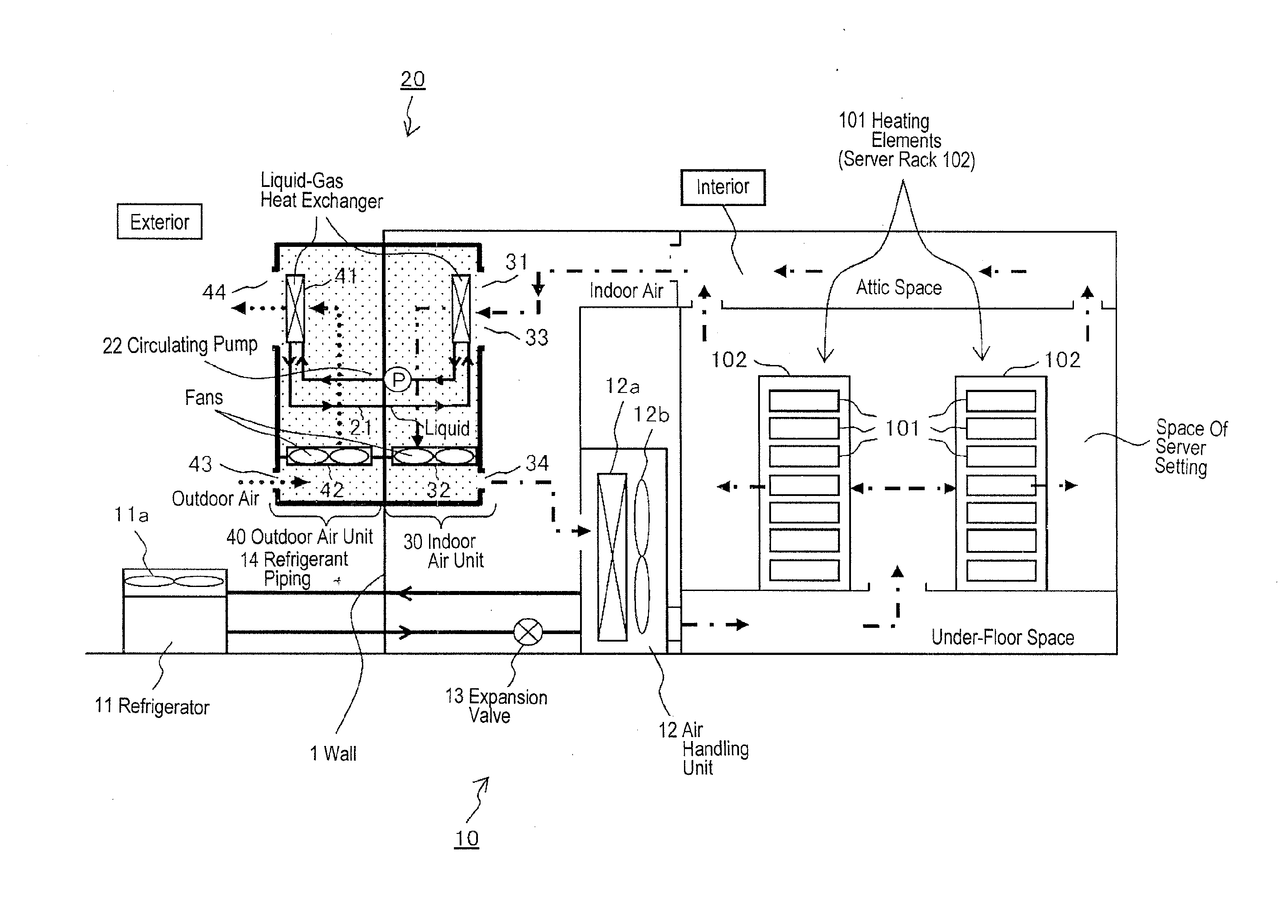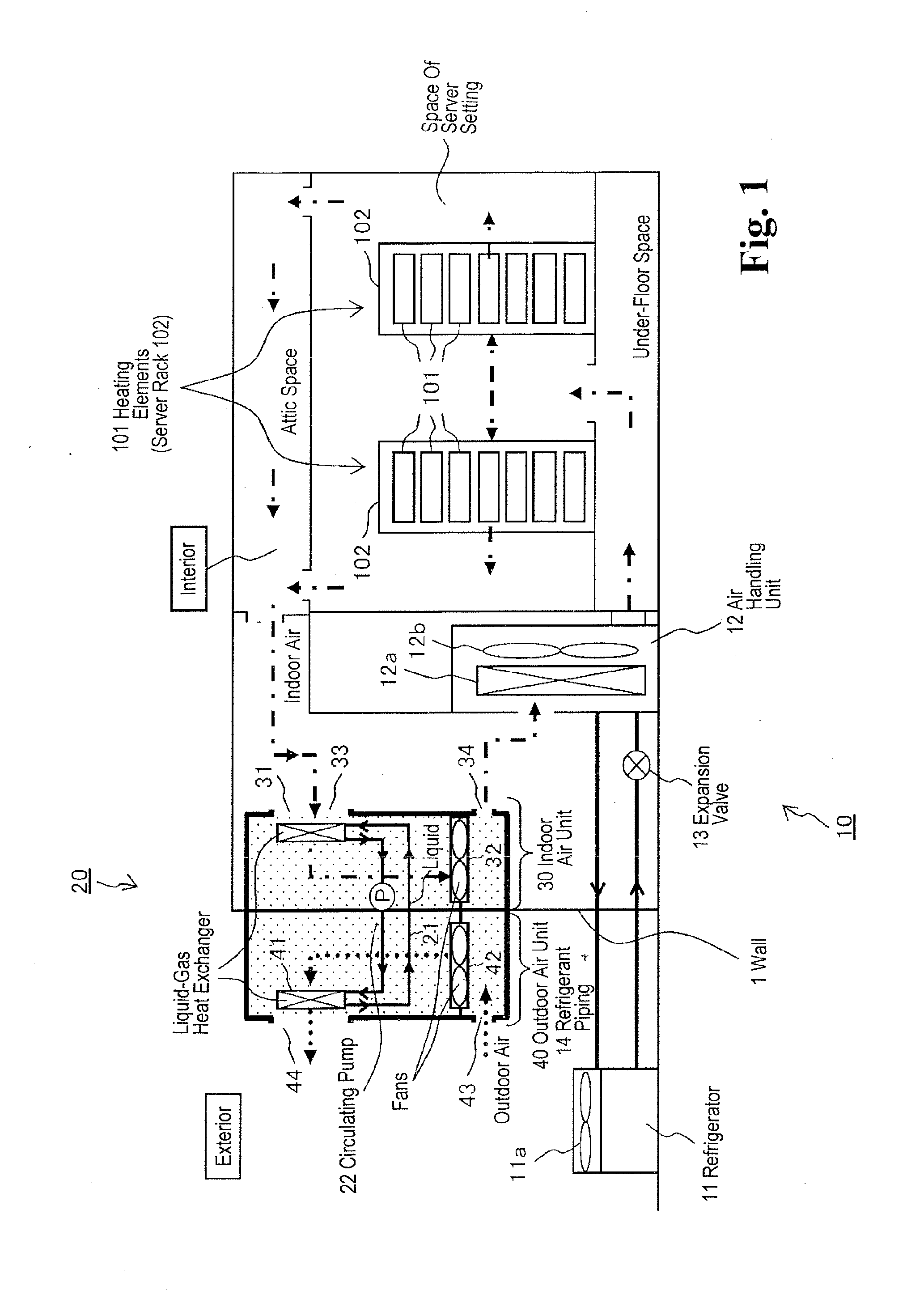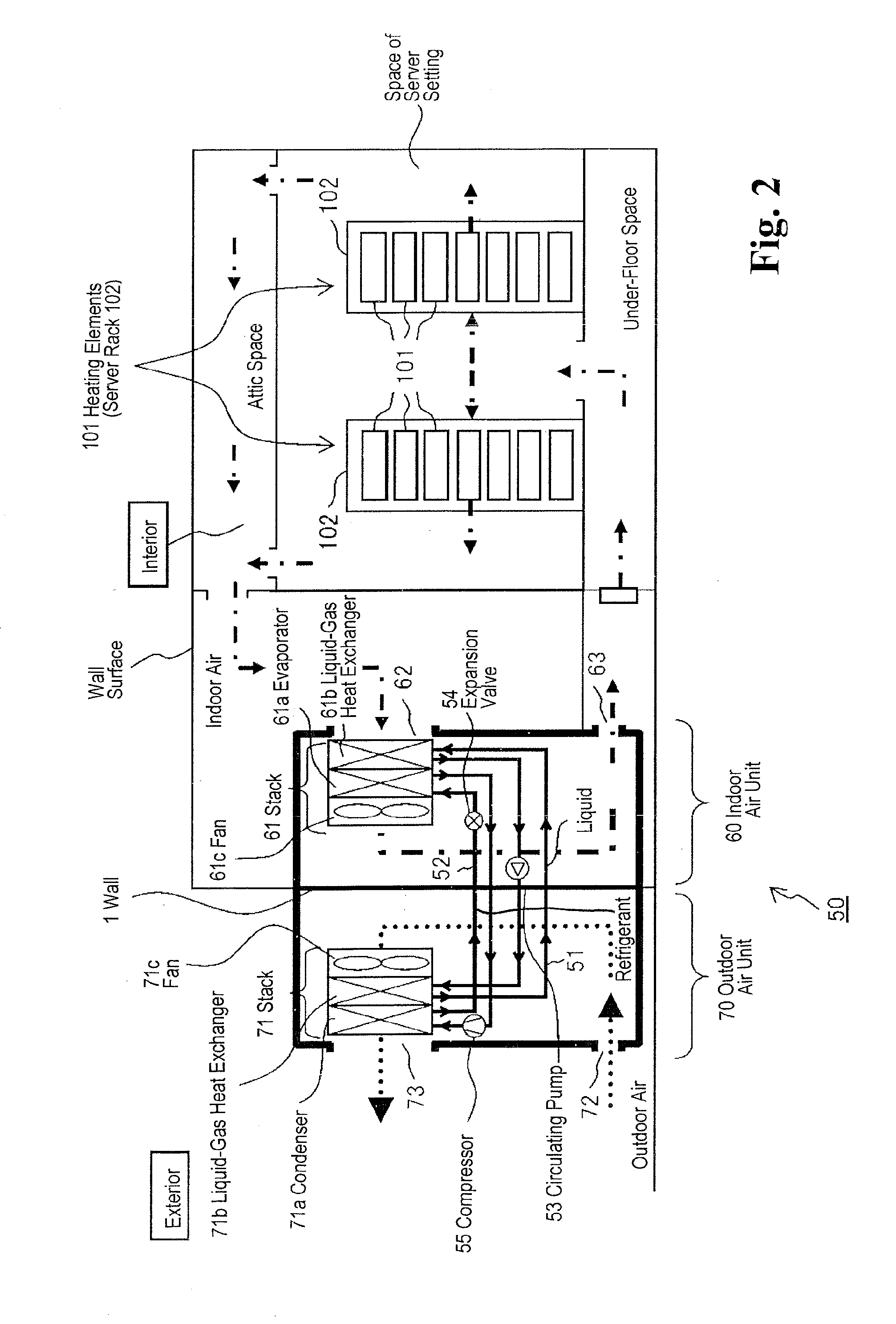Air conditioning system using outdoor air, indoor air unit, and outdoor air unit thereof, and stack
- Summary
- Abstract
- Description
- Claims
- Application Information
AI Technical Summary
Benefits of technology
Problems solved by technology
Method used
Image
Examples
first embodiment
[0053]FIG. 1 shows the configuration of the air conditioning system (indirect outdoor air cooling system) of the
[0054]In FIG. 1, the cooling object space that is to be cooled with the indirect outdoor air system is assumed to be the same as in the conventional example shown in FIG. 14. Thus, the interior space which is the object of cooling is, for example, a server room having installed therein a rack 102 carrying heating elements 101 such as server devices (computer devices). In the present example, the space of server setting shown in the figure is divided into an under-floor space and an attic space, in the same manner as in FIG. 14. This example, which is obviously not limiting, is used in the present explanation. In this example, the cooling object can be also interpreted, in the narrow meaning thereof, as the space of server setting.
[0055]Further, similarly to the example shown in FIG. 14, the interior of the building is separated from the exterior of the building by a wall 1...
second embodiment
[0101]The air conditioning system (integrated air condition system) of the second embodiment will be explained below.
[0102]The air conditioning system of the second embodiment is also an indirect outdoor air cooling system, but has an integrated compact configuration.
[0103]In the indirect outdoor air cooling system of the first embodiment, a ductless compact configuration that is simple to install is suggested for the indirect outdoor air cooler 20, but the typical air conditioner 10 is substantially the same as in the conventional system.
[0104]In the second embodiment, an integrated indirect outdoor air cooling system is suggested in which the function of the indirect outer air cooler 20 and the function of the typical air conditioner 10 are integrated.
[0105]As a result, the entire device configuration can be simplified, the device can be reduced in size and cost, and the total power consumption can be also expected to reduce.
[0106]FIG. 2 shows the configuration of the air conditio...
third embodiment
[0152]The air conditioning system of the third embodiment will be explained below.
[0153]The air conditioning system of the third embodiment resolves the above-described main problem. Thus, the air conditioning system is provided in which the outdoor air can be used for cooling the interior space even when the outdoor air temperature is high.
[0154]FIG. 4 shows the configuration of the air conditioning system (variation 1) of the third embodiment.
[0155]FIGS. 5A and 5B show the configuration of the air conditioning system (variation 2) of the third embodiment.
[0156]FIG. 6 shows the operation model of the air conditioning system of the third embodiment.
[0157]The air conditioning system of the third embodiment uses the outdoor air to cool the interior space, as in the above-described indirect outdoor air cooling system, and is therefore sometimes also called “outdoor-air-using air conditioning system”.
[0158]This system will be initially explained hereinabove with reference to FIG. 4.
[015...
PUM
 Login to View More
Login to View More Abstract
Description
Claims
Application Information
 Login to View More
Login to View More - Generate Ideas
- Intellectual Property
- Life Sciences
- Materials
- Tech Scout
- Unparalleled Data Quality
- Higher Quality Content
- 60% Fewer Hallucinations
Browse by: Latest US Patents, China's latest patents, Technical Efficacy Thesaurus, Application Domain, Technology Topic, Popular Technical Reports.
© 2025 PatSnap. All rights reserved.Legal|Privacy policy|Modern Slavery Act Transparency Statement|Sitemap|About US| Contact US: help@patsnap.com



